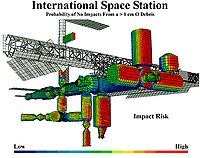
Photo from wikipedia
Purpose of ReviewSince identification of aspartate aminotransferase as the first cardiac biomarker in the 1950s, there have been a number of new markers used for myocardial damage detection over the… Click to show full abstract
Purpose of ReviewSince identification of aspartate aminotransferase as the first cardiac biomarker in the 1950s, there have been a number of new markers used for myocardial damage detection over the decades. There have also been several generations of troponin assays, each with progressively increasing sensitivity for troponin detection. Accordingly, the “standard of care” for myocardial damage detection continues to change. The purpose of this paper is to review the clinical utility, biological mechanisms, and predictive value of these various biomarkers in contemporary clinical studies.Recent FindingsAs of this writing, a fifth “next” generation troponin assay has now been cleared by the US Food and Drug Administration for clinical use in the USA for subjects presenting with suspected acute coronary syndromes. Use of these high-sensitivity assays has allowed for earlier detection of myocardial damage as well as greater negative predictive value for infarction after only one or two serial measurements. Recent algorithms utilizing these assays have allowed for more rapid rule-out of myocardial infarction in emergency department settings.SummaryIn this review, we discuss novel assays available for the risk assessment of subjects presenting with chest pain, including both the “next generation” cardiac troponin assays as well as other novel biomarkers. We review the biological mechanisms for these markers, and explore the positive and negative predictive value of the assays in clinical studies, where reported. We also discuss the potential use of these new markers within the context of future clinical care in the modern era of higher sensitivity troponin testing. Finally, we discuss advances in new platforms (e.g., mass spectrometry) that historically have not been considered for rapid in vitro diagnostic capabilities, but that are taking a larger role in clinical diagnostics, and whose prognostic value and power promise to usher in new markers with potential for future clinical utility in acute coronary syndrome.
Journal Title: Current Cardiology Reports
Year Published: 2017
Link to full text (if available)
Share on Social Media: Sign Up to like & get
recommendations!